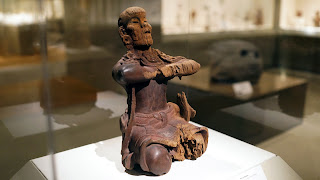Angkor Wat
https://smarthistory.org/angkor-wat/
Angkor Wat is a grand temple located in Siem Reap, Cambodia. Angkor Wat, when translated from Khmer (the official language of Cambodia) means "city temple" and is the largest religious monument in the world.
Angkor Wat has a lot of history and religious meaning. The Hindu religion has three principal gods in the Hindu pantheon; Shiva, Brahma, and Vishnu. The temple is said to be dedicated to the Hindu God Vishnu, also known as the "Protector". Angkor Wat began construction in 1113 C.E. and was built by King Suryavarman II. The king, whos name translates to "protector of the sun" was thought to be laid to rest here after death, meaning the temple was not only the home of the Hindu God Vishnu, but also the mausoleum of King Suryavarman II.
Khmer kings often had to legitimize their claim to political office by building temples. This was also a way to claim the protection and powers of the gods, by building them a home. In order for all of this to happen, the king has to be able to prove to the people that the gods did not favor the previous ruler nor his enemies. "The king had to build the grandest temple/palace for the gods, one that proved to be more lavish than any previous temples. In doing so, the king could make visible his ability to harness the energy and resources to construct the temple, and assert that his temple was the only place that a god would consider residing in on earth.
Within the walls of Angkor Wat, there are 1,200 square meters of carved bas reliefs said to tell eight different Hindu stories. The most important story told is one called Churning of the Ocean of Milk. It tells a story of Devas (Gods) fighting Asuras (demons) a battle of good against evil.





Hello,
ReplyDeleteIn this week's blog post, you did a good job explaining the purpose of the Angkor Wat temple: it serves as a dedication to one of the Hindu gods, Vishnu. I liked how you included what one of the walls on the inside of this temple looks like and explained what the art on the wall stood for. Next time you can try connecting these artworks to the actual religion itself by explaining some Hindu beliefs or rituals.